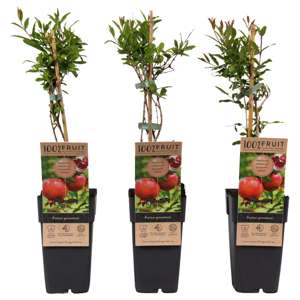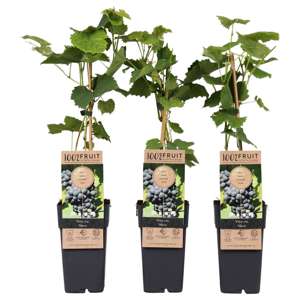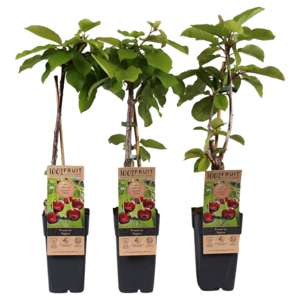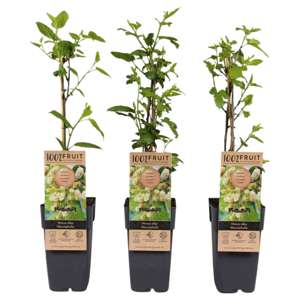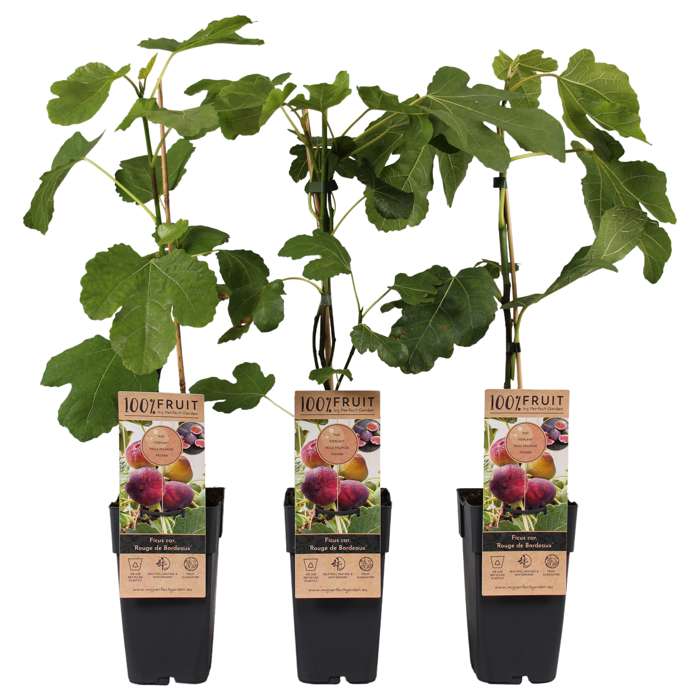
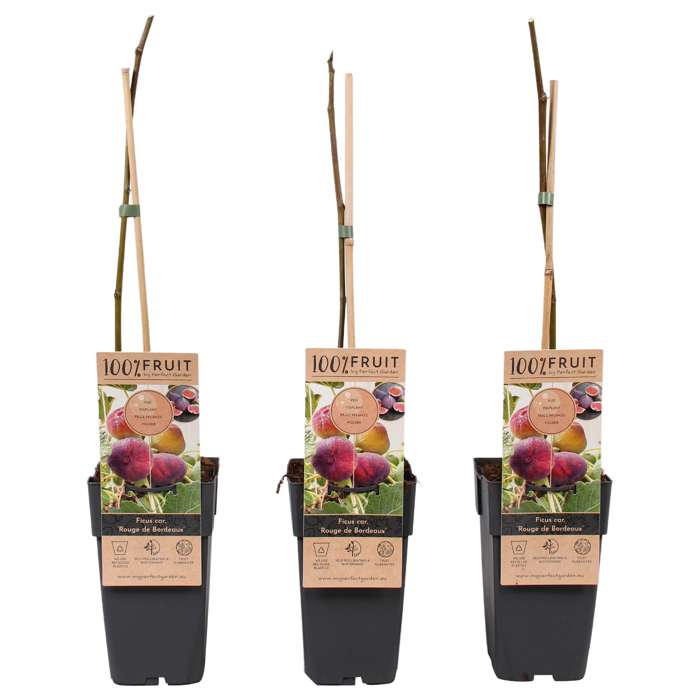

Ficus carica ‘Rouge de Bordeaux’
‘Ficus Rouge de Bordeaux’ is a fig tree and can be recognised by its pronounced, decorative leaves and edible fruit. This fig produces abundant fruit in September – October. The fruits are medium-sized and blue-red with red juicy and sweet flesh. You can eat the figs directly from the tree or dry them. The fig […]
Hardy
Red juicy and sweet flesh
Medium-sized blue/red fruits
Find our items at one of our online providers or a garden centre in your area:


Description
‘Ficus Rouge de Bordeaux’ is a fig tree and can be recognised by its pronounced, decorative leaves and edible fruit. This fig produces abundant fruit in September – October. The fruits are medium-sized and blue-red with red juicy and sweet flesh. You can eat the figs directly from the tree or dry them. The fig is one of the oldest fruits cultivated by man. The Egyptians, Phoenicians and Romans saw figs as food, commodity or remedy against constipation. The fig has no flowers; in fact, the fruit is also the flower. The leaves of the fig tree are in the shape of a hand, with notches in the leaf. A fig tree likes warm conditions and can grow very fast, up to 1 metre a year. It grows best against a wall, gazebo or sheltered from the south. In the full soil, the fig tree can withstand frost reasonably well. When planted in a pot, it is best to bring the plant inside in winter. Young plants should always be protected from frost. If the branches of the fig tree become too long, you can prune it.
Specifications
More More More...
